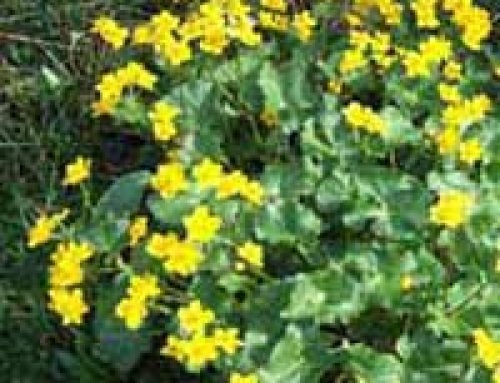
Good planting can make or break a pond, so if you know your plants, you should always be assured of a really great looking water garden. The only trouble is, between floaters and oxygenators, marginals and bog plants, there’s just such a lot to take in.
Do you instinctively know the subtle difference between a water plant that’s invasive and one that is merely vigorous – or do you struggle to tell duckweed from dandelions? Ever wondered just how much of a water plant expert you are? If you have, then here’s your chance to find out; the answers are at the bottom, so have fun – and best of luck!
1. The water plant catalogue is offering you a ‘Brandy Bottle’ – but what would you be buying?
-
-
- a) A type of bog plant.
- b) A kind of water lily.
- c) A variety of duckweed.
-
2. Which of these would you NOT buy as an oxygenator for your pond?
- a) Curly Pondweed.
- b) Hornwart.
- c)Water Soldier.
3. Hostas are virtually synonymous with one type of garden pest in particular; which one?
- a) Aphids.
- b) Slugs.
- c) Weevils.
4. When would you aim to plant new water lilies ?
- a) Between late spring and summer.
- b) Between late summer and autumn.
- c) Between late autumn and spring.
5. Which of these plants would be best suited to go beside a pond in a small garden?
- a) Corkscrew Rush.
- b) Chilean Rhubarb.
- c) Reed Mace.
6. If you’re planning a wildlife pond, you need to know your native plants – so which of these ISN’T ?
- a) Curly Pondweed.
- b) Hornwart.
- c) Water Hawthorn.
7. What’s the easiest way to propagate most submerged oxygenators?
- a) Cuttings.
- b) Grafting.
- c) Seeds.
8. Water hyacinth, fairy moss and greater duckweed; how many of them are floaters?
- a) 1
- b) 2
- c) 3
9. What does the word nana in a plant’s scientific name tell you?
- a) It’s a giant.
- b) It’s a dwarf.
- c) It’s only suitable for grandmothers’ gardens.
10. Finally, water lilies are normally described in one of four categories – dwarf, small, medium and ……….?
- a) Vigorous.
- b) Ludicrous.
- c) Ridiculous.
ANSWERS
1. b) Brandy bottle is one of the alternative names for Nuphar lutea, otherwise known as the Common Pond Lily. Depending on who you choose to believe, the association with brandy comes from the scent of the flowers, or possibly the shape of its seed pods (or maybe just an over-active imagination brought on drinking rather too much of the very liqueur itself!)
2. c) For all its impressive looks, the Water Soldier – a British native species – is a floating plant and contributes very little oxygen to the water, unlike the other two.
3. b) Hostas seem to be routinely plagued by slugs in almost everybody’s garden!
4. a) Water lilies need to be planted out between late spring and summer to give them a chance to get properly established in the pond, long before winter comes.
5. b) Corkscrew Rush would be the best choice for smaller spaces, since both of the others grow very large indeed; Reed Mace is also known as Bulrush, and Chilean or Giant Rhubarb is the well known – and breathtakingly massive – Gunnera.
6. c) Also known as Cape Pond Weed, despite the familiar sound of the name and the fact that it has become naturalised in parts of the UK, Water Hawthorn originates in South Africa.
7. a) For submerged oxygenators, taking cuttings is generally the quickest and easiest way to propagate new plants – and it also helps to ensure new growth and healthy young stock.
8. c) All three of these plants are floaters.
9. b) It comes from the Latin “nanus” meaning a dwarf, and can be a very helpful word to know if you’re picking plants for a small garden pond!
10. The real answer is (a) ‘vigorous’ – although there are times when you could be forgiven for using either of the other descriptions!
So, How Did You Do?
10 – Blooming!
6 to 9 – Floating!
3 to 5 – Marginal!
0 to 2 – Weedy!









Excellent quiz, enjoyable and light hearted, plus i scored very well for a novice. Thank you. Paul
I think I’ve asked this question a few years back but i am plagued with fairy moss yet again this year.I don’t aerate the pond very often as the plants that have established in my pond are Water Hawthorn and Water solders.Every year we get an army of frogs collonising the pond and producing barrow loads of tadpoles which I am relunctant to add any chemicals .Also have a few Golden Rudd in the pond somewhere but very rarely see with all this fairy moss which I take out the moss manually but it just seems to multiply.